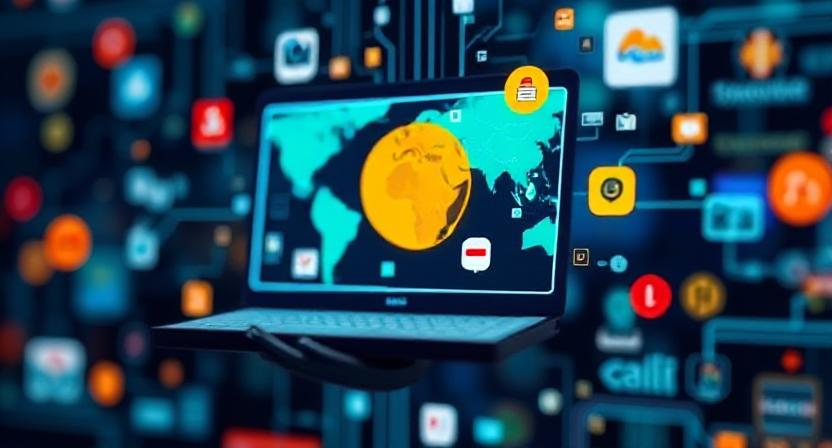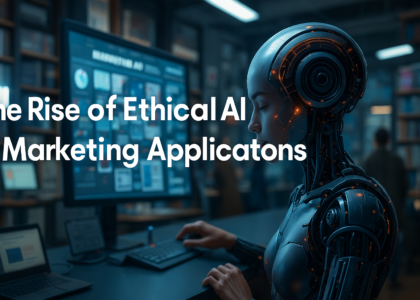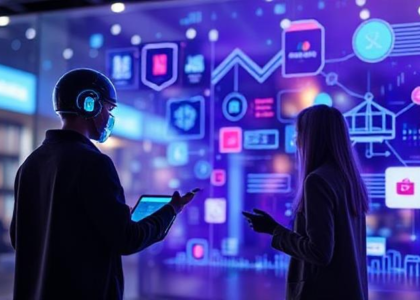In today’s globalized world, businesses need to connect with audiences across different languages and cultures. However, multilingual content marketing comes with significant challenges, such as translation accuracy, cultural nuances, and audience engagement. AI-powered solutions are revolutionizing the way companies create and distribute content across multiple languages. By automating translation, localization, and personalization, AI is making multilingual marketing more efficient, cost-effective, and impactful.
This blog explores how AI enhances multilingual content marketing, the tools that make it possible, and what the future holds for AI-driven global marketing strategies.

Understanding Multilingual Content Marketing
What is Multilingual Content Marketing?
Multilingual content marketing refers to creating and distributing marketing materials in multiple languages to engage audiences from different linguistic backgrounds. This includes websites, blogs, social media posts, advertisements, and multimedia content.
Why is it Important?
With over 7,000 languages spoken worldwide, businesses must adapt their content to reach wider audiences. Offering content in multiple languages enhances brand credibility, improves user experience, and boosts international sales.
Challenges in Multilingual Marketing
- Translation Accuracy – Manual translations can be costly and time-consuming, while automated translations sometimes lack contextual accuracy.
- Cultural Adaptation – Direct translations often fail to capture cultural nuances, leading to misinterpretation.
- SEO Optimization – Different languages require unique keyword research and optimization strategies.
- Scalability – Creating and managing content in multiple languages can be resource-intensive.
AI helps address these challenges by providing smart, scalable solutions for multilingual content marketing.

How AI Enhances Multilingual Content Marketing
1. AI-Powered Translation Tools
AI-driven translation tools, such as Google Translate, DeepL, and Microsoft Translator, have improved significantly with Neural Machine Translation (NMT) technology. These tools use deep learning to analyze linguistic patterns, enhancing accuracy and contextual understanding.
Benefits of AI in Translation:
- Faster and More Efficient – AI translates large volumes of text in seconds.
- Contextual Accuracy – AI models learn from vast datasets to improve translation precision.
- Cost-Effective – Reduces the need for expensive human translators for general content.
2. AI for Content Localization
Localization goes beyond translation by adapting content to specific cultural, linguistic, and contextual nuances. AI analyzes language, tone, idioms, and local preferences to ensure content feels native to the target audience.
Example: Coca-Cola’s Global Campaigns
Coca-Cola uses AI-driven localization to customize advertisements, slogans, and branding for different regions while maintaining its core message.
3. AI-Generated Multilingual Content
AI-powered writing tools like ChatGPT, Jasper, and Copy.ai help businesses create engaging, multilingual content efficiently. These tools can generate blog posts, product descriptions, and ad copy in various languages while maintaining brand consistency.
4. AI for Voice and Video Content Localization
With the rise of video marketing, AI-driven speech synthesis, dubbing, and subtitling are transforming how brands communicate with international audiences.
How AI Helps:
- Automated Dubbing – AI-generated voiceovers adapt tone and style to different languages.
- Real-Time Subtitling – AI transcribes and translates video content instantly.
- Lip-Sync Technology – AI adjusts lip movements in dubbed videos for a natural appearance.
5. AI-Powered Social Media Marketing
AI helps brands optimize their social media strategies by analyzing engagement trends, translating posts, and automating responses in multiple languages.
Example: Netflix’s AI-Driven Social Media Strategy
Netflix uses AI to tailor promotional content based on regional preferences, ensuring culturally relevant messaging.
6. AI for Personalized Multilingual Content
Personalization plays a crucial role in customer engagement. AI analyzes user behavior and preferences to deliver customized content recommendations in different languages.
How AI Personalization Works:
- Dynamic Content Adaptation – AI modifies headlines, CTAs, and product descriptions for different audiences.
- Chatbots & Virtual Assistants – AI-powered bots provide real-time multilingual customer support.
- Predictive Analytics – AI anticipates user interests and suggests relevant content.
7. AI and Multilingual SEO Strategies
SEO optimization varies by language and region. AI simplifies multilingual SEO by identifying high-performing keywords, analyzing competitors, and optimizing content in different languages.
Key AI SEO Tools:
- SEMrush & Ahrefs – AI-powered keyword research in multiple languages.
- Surfer SEO – AI-based content optimization.
- Google BERT Algorithm – Enhances search query understanding for different languages.
8. AI-Based Analytics for Multilingual Content
AI-driven analytics tools track engagement, user behavior, and conversion rates across different languages and regions. These insights help businesses refine their multilingual marketing strategies.
How AI Analytics Benefits Marketers:
- Real-Time Performance Tracking – AI provides instant feedback on content effectiveness.
- Sentiment Analysis – AI assesses customer emotions and reactions in different languages.
- A/B Testing Automation – AI tests multiple content versions to determine the best-performing one.
9. Ethical Considerations & AI Bias in Multilingual Marketing
Despite AI’s advantages, potential biases in translation and cultural adaptation must be addressed. AI models can unintentionally reinforce stereotypes or misunderstand cultural contexts.
How to Mitigate AI Bias:
- Human Oversight – Combining AI with human editors ensures accuracy.
- Diverse Training Data – AI models should be trained with inclusive and regionally diverse datasets.
- Regular Updates – AI systems need continuous refinement for better cultural sensitivity.

The Future of AI in Multilingual Content Marketing
AI technology is constantly evolving, and its role in multilingual content marketing will expand further. Future trends include:
- Advanced AI-powered storytelling to create hyper-personalized narratives.
- AI-driven holographic customer service in multiple languages.
- Real-time language adaptation in AR/VR experiences.
Businesses that embrace AI in multilingual marketing will gain a competitive edge in the global market.
Conclusion
AI is transforming multilingual content marketing by improving translation accuracy, localization, personalization, and SEO strategies. From AI-driven copywriting tools to automated voice dubbing, AI enables businesses to scale their content efforts across different languages efficiently. However, ethical considerations and human oversight remain crucial to ensuring high-quality and culturally relevant content.
As AI continues to evolve, it will further enhance global marketing efforts, improve audience engagement, and drive higher conversions. Businesses that leverage AI for multilingual marketing today will be well-positioned for future success in an increasingly connected world.





